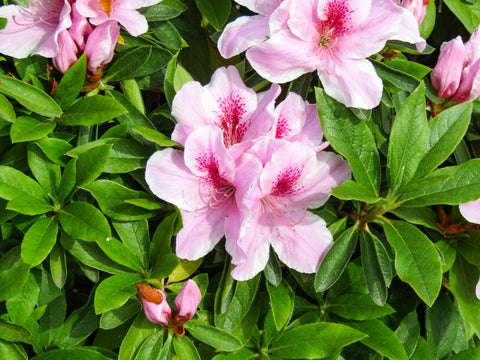
How to Grow and Care for Azalea I Mainaam Garden

Azalea features bright and colourful flowering shrubs in the Rhododendron genus of the Ericaceae family. These irresistible, gorgeous shrubs come in a variety of colour varieties that suit a wide range of landscapes. Their vibrant colours add personality to any garden and make a stunning statement in the spring garden. However, there are some varieties that bloom in the early summer and early fall.
Whether your azalea is a houseplant or an outdoor plant, by choosing the right azaleas for your home and care for them properly. You can enjoy those delicious blooms for up to eight months!
A quick note: If you live in a warmer climate like India, buy azaleas in three-gallon pots rather than one-gallon pots because small plants with fewer roots struggle to consume enough water during the summer.
| Common Names | Azalea |
| Botanical Name | Rhododendron |
| Family | Ericaceae |
| Plant Type | Deciduous or evergreen shrub |
| Mature Size | 3' to 12' |
| Sun Exposure | Full sun or part shade |
| Soil Type | Acidic |
| Soil pH | 5.5 to 6.0 |
| Bloom Time | Early to late spring |
| Flower Color | White, pink, red, orange |
| Hardiness Zones | 3 to 9 (3 to 7, 5 to 9) |
| Native Area | Asia, Europe, North America |
| Toxicity | Toxic to humans, cat and dogs |
What's the Difference Between Azaleas and Rhododendrons?
In the garden industry, Azaleas are commonly mistaken with the more popular cousin of the rhododendron plants, so you may run into confusion. One way to tell them apart at first glance is most rhododendrons have large leaves with a noticeable texture, small dots (scales), and large round clusters of flowers whereas Azalea leaves are smaller with a thinner texture, no scales, and blooms are more evenly distributed on the entire shrub. There are over 10,000 different types of azaleas and about 800 different species.

Azalea Care
Azalea is best grown as a garden plant in full sun or part shade (about four hours of sun) but is an excellent indoor plant as well. Plant it in acidic (pH 4-6), well-draining soil with a friable structure. Since Azaleas come in both deciduous and evergreen varieties, they will do best in high humidity. One way to provide this is to place the pot on a tray of pebbles that is kept wet. Avoid misting as azaleas are susceptible to fungus.







Leave a comment